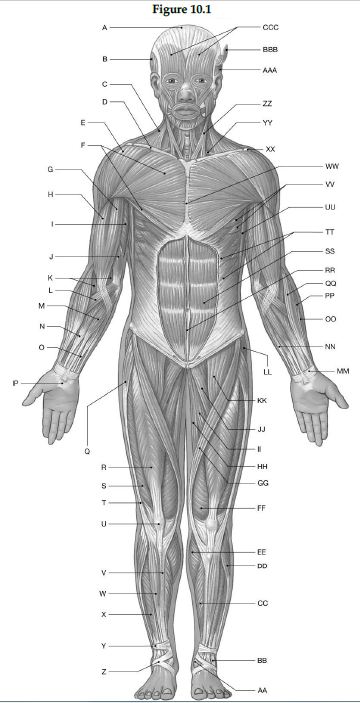Which of the following is a unique characteristic of glucose as a solute in biological systems?
A) It is freely penetrating and can pass in and out of the cells at any time.
B) It is converted into dextrose inside the cell.
C) 100% of it is absorbed into the cell from the extracellular fluid.
D) It enters the interstitial fluid before going into the cell.
C) 100% of it is absorbed into the cell from the extracellular fluid.
You might also like to view...
Which of the following joints is multiaxial?
A. Radioulnar joint B. Interphalangeal joint C. Shoulder joint D. Knee joint E. Ankle joint
In response to high blood pressure, stretch receptors called __________ in the walls of arteries carrying blood to the head will trigger a reflex that causes the heart to __________ its beats per minute.
A. baroreceptors; decrease B. proprioceptors; decrease C. baroreceptors; increase D. proprioceptors; increase E. chemoreceptors; increase
Using the figure below, identify the labeled part.

1) Label A: ______________________________
2) Label B: ______________________________
3) Label C: ______________________________
4) Label D: ______________________________
5) Label E: ______________________________
6) Label F: ______________________________
7) Label G: ______________________________
8) Label H: ______________________________
9) Label I: ______________________________
10) Label J: ______________________________
11) Label K: ______________________________
12) Label L: ______________________________
13) Label M: ______________________________
14) Label N: ______________________________
15) Label O: ______________________________
16) Label P: ______________________________
17) Label Q: ______________________________
18) Label R: ______________________________
19) Label S: ______________________________
20) Label T: ______________________________
21) Label U: ______________________________
22) Label V: ______________________________
23) Label W: ______________________________
24) Label X: ______________________________
25) Label Y: ______________________________
26) Label Z: ______________________________
27) Label AA: ______________________________
28) Label BB: ______________________________
29) Label CC: ______________________________
30) Label DD: ______________________________
31) Label EE: ______________________________
32) Label FF: ______________________________
33) Label GG: ______________________________
34) Label HH: ______________________________
35) Label II: ______________________________
36) Label JJ: ______________________________
37) Label KK: ______________________________
38) Label LL: ______________________________
39) Label MM: ______________________________
40) Label NN: ______________________________
41) Label OO: ______________________________
42) Label PP: ______________________________
43) Label QQ: ______________________________
44) Label RR: ______________________________
45) Label SS: ______________________________
46) Label TT: ______________________________
47) Label UU: ______________________________
48) Label VV: ______________________________
49) Label WW: ______________________________
50) Label XX: ______________________________
51) Label YY: ______________________________
52) Label ZZ: ______________________________
53) Label AAA: ______________________________
54) Label BBB: ______________________________
55) Label CCC: ______________________________
Running away from a voracious predator at night will most likely engage your....